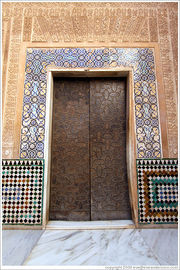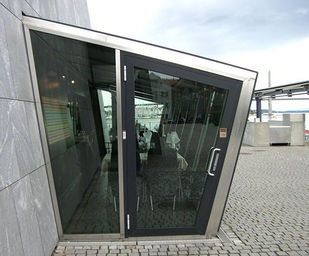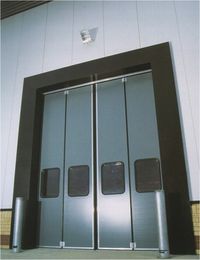Introduction
A door is a moveable barrier used to cover an opening. Doors are used widely and are found in walls or partitions of a building, vehicles, and furniture. A door can be opened to give access and closed more or less securely using a combination of latches and locks. Doors allow passages between the inside and outside, and between the internal rooms. When it is open, they admit ventilation and light. The door is used to control the physical atmosphere within a space by enclosing it, so that the interiors are effectively heated or cooled. Doors are significant in preventing the spread of fire. They also act as a barrier to noise. They are also used to screen areas of a building for aesthetic purposes and roles in creating an impression of what lies beyond.
Design and Styles
Many kinds of doors have specific names, depending on their purpose. The most common variety of door is the single-leaf door which consists of a single rigid panel that fills the doorway. Many variations on this basic design are possible, such as the double-leaf door or double doors that have two adjacent independent panels hinged on each side of the doorway.




Types of Mechanism
Hinged doors
Most doors are hinged along one side. The axis of rotation is usually vertical. In some cases, such as hinged garage doors, the axis may be horizontal, above the door opening. Doors can be hinged so that the axis of rotation is not in the plane of the door to reduce the space required on the side to which the door opens.
Folding doors
Folding doors have multiple panels which fold upon one another when such doors are opened. These doors are often used to cover a broad space where a straight door’s swing would be cumbersome or restricted. Folding doors combine the actions of both hinged and slider doors, and use both end pivots and overhead tracks.
Sliding doors
Sliding doors are often useful to have doors which slide along tracks, often for space or aesthetic considerations. Sliding glass doors are common in many houses, particularly as an entrance to the backyard. Such doors are also popular for use for the entrances to commercial structures.
Automatic doors
Automatic doors are powered open and closed either by electricity, spring, or both. There are several methods by which an automatic door is activated. Sensors for automatic doors are generally:
- A pressure sensor reacts to the pressure of someone standing on it.
- An infrared curtain or beam which shines invisible light onto sensors. If someone or something blocks the beam the door is triggered open.
- A motion sensor which uses low-power microwave radar for the same effect.
- A remote sensor can be triggered by a portable remote control, or is installed inside a vehicle. These are popular for garage doors.
Door Components
- Lintel - A horizontal beam above a door that supports the wall above.
- Jambs - The vertical posts that form the sides of a door frame, where the hinges are mounted, and with which the bolt interacts.
- Sill - A horizontal beam below the door that supports the frame
- Doorstop - a thin slat built inside the frame to prevent a door from swinging through when closed, which might break the hinges.
- Architrave - The decorative molding that outlines a door frame.

Tiada ulasan:
Catat Ulasan